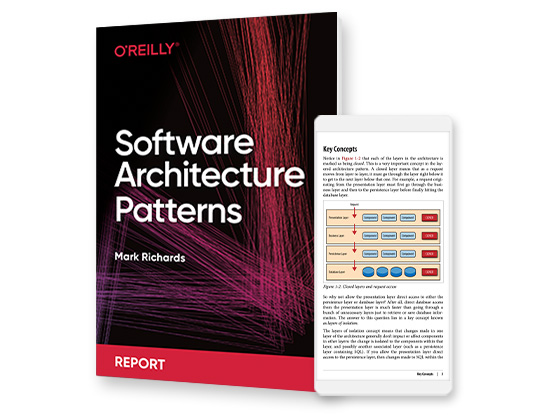Book description
Networked thermostats, fitness monitors, and door locks show that the Internet of Things can (and will) enable new ways for people to interact with the world around them. But designing connected products for consumers brings new challenges beyond conventional software UI and interaction design.
This book provides experienced UX designers and technologists with a clear and practical roadmap for approaching consumer product strategy and design in this novel market. By drawing on the best of current design practice and academic research, Designing Connected Products delivers sound advice for working with cross-device interactions and the complex ecosystems inherent in IoT technology.
Publisher resources
Table of contents
- Dedication
- Praise for Designing Connected Products
- Foreword
- Preface
-
1. What’s Different About User Experience Design for the Internet of Things?
-
How Is UX for IoT Different?
- Functionality Can Be Distributed Across Multiple Devices with Different Capabilities
- The Focus of the User Experience May Be in the Service
- We Don’t Expect Internet-Like Glitches from the Real World
- IoT is Largely Asynchronous
- Code Can Run in Many More Places
- Devices are Distributed in the Real World
- Remote Control and Automation are Programming-Like Activities
- Complex Services Can Have Many Users, Multiple UIs, Many Devices, Many Rules and Applications
- Many Differing Technical Standards Make Interoperability Hard
- IoT is All About Data
- A Design Model for IoT
- Summary
-
How Is UX for IoT Different?
- 2. Things: The Technology of Connected Devices
-
3. Networks: The Technology of Connectivity
- Why is Networking Relevant to IoT UX?
- Networking Issues That Cause UX Challenges for IoT
- The Architecture of the Internet of Things
- Types of Network
- Network Communication Patterns
- Internet Service
- Summary
- Case Study 1: Proteus Digital Health: The Connected Pill
- 4. Product/Service Definition and Strategy
- 5. Understanding People and Context
- 6. Translating Research into Product Definitions
-
7. Embedded Device Design
-
An Introduction to Thinking About Physical Objects in IoT
- The Demise of “Form Follows Function”
- Another Layer of Experience
-
Interaction and Placement: Basic Design Drivers
- Devices that are hidden away and only rarely interacted with beyond initial setup
- Devices that are interacted with occasionally, but that are more conspicuous and abundant due to what they do
- Devices that are interacted with frequently and that are likely to be on display to be easily accessible or visible
- Challenging These Characteristics
- Making Stuff: Differences to UX
- Essentials of the Design Process
- Three Faces of a Physical Product
- Summary
-
An Introduction to Thinking About Physical Objects in IoT
-
8. Interface and Interaction Design
- Types of Interaction
- IoT-Specific Challenges and Opportunities
- Universal Design and Accessibility
- Summary
- Case Study 3: Ford SYNC 3: Connected Car
-
9. Cross-Device Interactions and Interusability
- Cross-Platform UX and Usability
- What Is Interusability?
-
Conceptual Models and Composition
- Conceptual Models
-
Composition
- Patterns of composition
-
Determining the right composition
- What best fits the context of use?
- What connectivity and power issues do you need to consider?
- Can you work with preexisting devices?
- What interaction capabilities do the various devices have (or could you cost-effectively include on a custom device?)
- Does the system need to work if some devices are unavailable?
- How accurate does sensing need to be?
- Do users have set expectations of devices?
- How do you balance cost, upgradeability, and flexibility?
- How central to the service are the devices?
- Consistency
- Continuity
- Summary
-
10. Interoperability
- The CompuServe of Things
- What Is Interoperability and Why Is It a Problem?
- How Can Devices Interoperate?
- How Can We Improve Interoperability?
- The UX of Interoperability
- Summary
- Case Study 4: LOOP: Connected Pelvic Floor Exerciser
- 11. Responsible IoT Design
- 12. Supporting Key Interactions
-
13. Designing with Data
- Introduction
- Data in IoT
- Types of Data-Driven Product
- What This Means for Design
- Summary
-
14. Iterative Design: Prototyping and Learning
- The Necessity of Working Iteratively
- Using Prototypes to Answer Questions
- How Do You Decide What to Prototype?
- Evaluation: Success Demands Failure
- Summary
-
15. Designing Complex, Interconnected Products and Services
- It’s Complicated...
- Scaling the UX
- Control
- Approaches to Managing Complexity
- Summary
- A. Companies, Products, and Links
- B. About the Authors
- Index
- About the Authors
- Copyright
Product information
- Title: Designing Connected Products
- Author(s):
- Release date: May 2015
- Publisher(s): O'Reilly Media, Inc.
- ISBN: 9781449372569
You might also like
book
Designing with Data
On the surface, design practices and data science may not seem like obvious partners. But these …
book
User Experience Design
Igniting business growth through UX In an increasingly digital world, users are rewarding products and services …
book
Product Design vs. Design Thinking
Product design tends to jump between business thinking and creative thinking, but design thinking blends them …
book
Designing for Emerging Technologies
The recent digital and mobile revolutions are a minor blip compared to the next wave of …

